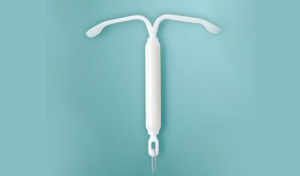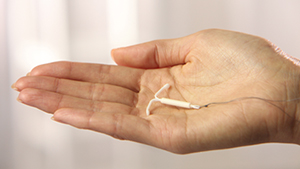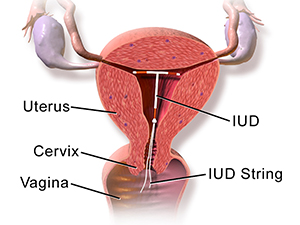
What is an IUD?
An IUD or IUCD (intra-uterine contraceptive device) is a form of contraceptive and involves a device being placed inside the uterus (womb) to prevent pregnancy.
An IUD is a small plastic device in the shape of a 'T' with plastic strings attached.
The device releases the hormone progesterone (levonorgestrel) into the uterus. 
Why Consider an IUD?
IUD are a popular type of long acting, reversible contraception. IUD’s can offer long-term contraception for up to 5 years after insertion.
Further, the IUD can be removed at any point of time ensuring an immediate return to fertility.
Other Benefits of IUDs?
It is also often used to treat heavy and painful periods. Benefits over the other contraceptive methods are 
- Menstrual bleeding reduction
- Menstrual pain decreases in about 3-6 months of its insertion
- Pelvic inflammatory disease risk decreased
- Endometrial cancer risk is decreased
- Elimination of adverse effects associated with oestrogen based contraceptive
IUD’s do not offer any protection towards sexually transmitted devices.
About Minera
Mirena® is a contraceptive intrauterine device used by women to prevent unwanted pregnancy. Mirena® is the only hormone-releasing intrauterine device (IUD) available in Australia.
When placed in the uterus, the IUD releases the hormone progestin that makes the cervical mucus more viscous and the endometrium thinner so as to avoid the entry of sperms into the fallopian tubes.
Mirena is also considered to partially suppress ovulation.
Minera Procedure Consideration
The procedure is more suitable for women who have had a vaginal delivery as women who have not had a vaginal delivery may find it painful.
For these women, it is possible to insert the Mirena under sedation as a Day Stay procedure. Prior to your appointment, Dr Gailani recommends you take take two panadol or ponstan one hour before.
Mirena Procedure
Mirena insertion is a quite safe procedure and takes about 4 minutes. It is generally performed in the rooms.
The procedure is slightly more involved than a Pap smear and uses similar devices such as a speculum.
During the procedure Dr Gailani will:
- Cleans the cervix with an antiseptic solution,
- Aligns the cervical canal and the uterine cavity using appropriate instruments
- Measures the depth of your uterine cavity with a tool
- Inserts the Mirena, and
- Finally, the strings of the device are then trimmed.
After the Minera Procedure
Most women will experience minor pelvic cramps for about 24 hours. Panadol alone is enough to control the cramps. There may be light bleeding for a few days. It is advisable that you avoid intercourse, tampons, baths and swimming for 48 hours to minimise the risk of infection.
If for whatever reason, you are not satisfied with the Mirena, it can be easily removed.
When is Minera Not Appropriate
The use of Mirena may be inappropriate if you have any of the following conditions:
- Cancers in breast, uterus, cervix and liver
- Uterine abnormalities such as fibroids,
- Pelvic infection or pelvic inflammatory disease,
- Abnormal vaginal bleeding or vaginal inflammation
- A lower genital tract infection.
Potential Side Effects
Some women can:
- Find their first period is a lot lighter but continue a lot longer
- Experience irregular bleeding or spotting for the first 3-6 months
- 95% of women will find menstruation is a lot lighter and less painful.
- 30% of women will not have any periods as long as the Mirena is in.
Copper (Non-hormonal) IUD
Copper IUD’s are also available. Patients requiring these devices are generally seen across 2 visits to the clinic.
The first visit will be a consultation and assessment only. Dr Gailani will discuss the pros and cons of the IUD with you at this visit and also other contraceptive options that may suitable to you.
Most IUD insertions take place in our office however there may be some cases where an insertion would be better performed in an operating theatre under anaesthetic.






